Functional SARS-CoV-2-Specific Immune Memory Persists after Mild COVID-19
- PMID: 33296701
- PMCID: PMC7682481
- DOI: 10.1016/j.cell.2020.11.029
Functional SARS-CoV-2-Specific Immune Memory Persists after Mild COVID-19
Abstract
The severe acute respiratory syndrome coronavirus 2 (SARS-CoV-2) virus is causing a global pandemic, and cases continue to rise. Most infected individuals experience mildly symptomatic coronavirus disease 2019 (COVID-19), but it is unknown whether this can induce persistent immune memory that could contribute to immunity. We performed a longitudinal assessment of individuals recovered from mild COVID-19 to determine whether they develop and sustain multifaceted SARS-CoV-2-specific immunological memory. Recovered individuals developed SARS-CoV-2-specific immunoglobulin (IgG) antibodies, neutralizing plasma, and memory B and memory T cells that persisted for at least 3 months. Our data further reveal that SARS-CoV-2-specific IgG memory B cells increased over time. Additionally, SARS-CoV-2-specific memory lymphocytes exhibited characteristics associated with potent antiviral function: memory T cells secreted cytokines and expanded upon antigen re-encounter, whereas memory B cells expressed receptors capable of neutralizing virus when expressed as monoclonal antibodies. Therefore, mild COVID-19 elicits memory lymphocytes that persist and display functional hallmarks of antiviral immunity.
Keywords: COVID-19; SARS-CoV2; adaptive immune response; human; memory B cell; memory T cell; monoclonal antibody; vaccine.
Copyright © 2020 Elsevier Inc. All rights reserved.
Conflict of interest statement
Declaration of Interests M.P., D.J.R., J.N., C.D.T., Y.C., and L.B.R. have filed a patent under the provisional serial no. 63/063,841. Other authors declare no competing interests.
Figures



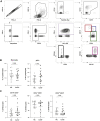
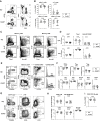




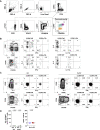
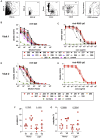
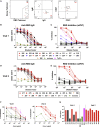

Update of
-
Functional SARS-CoV-2-specific immune memory persists after mild COVID-19.medRxiv [Preprint]. 2020 Aug 15:2020.08.11.20171843. doi: 10.1101/2020.08.11.20171843. medRxiv. 2020. Update in: Cell. 2021 Jan 7;184(1):169-183.e17. doi: 10.1016/j.cell.2020.11.029. PMID: 32817957 Free PMC article. Updated. Preprint.
-
Functional SARS-CoV-2-specific immune memory persists after mild COVID-19.Res Sq [Preprint]. 2020 Aug 13:rs.3.rs-57112. doi: 10.21203/rs.3.rs-57112/v1. Res Sq. 2020. Update in: Cell. 2021 Jan 7;184(1):169-183.e17. doi: 10.1016/j.cell.2020.11.029. PMID: 32818218 Free PMC article. Updated. Preprint.
Similar articles
-
Functional SARS-CoV-2-specific immune memory persists after mild COVID-19.Res Sq [Preprint]. 2020 Aug 13:rs.3.rs-57112. doi: 10.21203/rs.3.rs-57112/v1. Res Sq. 2020. Update in: Cell. 2021 Jan 7;184(1):169-183.e17. doi: 10.1016/j.cell.2020.11.029. PMID: 32818218 Free PMC article. Updated. Preprint.
-
Functional SARS-CoV-2-specific immune memory persists after mild COVID-19.medRxiv [Preprint]. 2020 Aug 15:2020.08.11.20171843. doi: 10.1101/2020.08.11.20171843. medRxiv. 2020. Update in: Cell. 2021 Jan 7;184(1):169-183.e17. doi: 10.1016/j.cell.2020.11.029. PMID: 32817957 Free PMC article. Updated. Preprint.
-
Persistence of Antibody and Cellular Immune Responses in Coronavirus Disease 2019 Patients Over Nine Months After Infection.J Infect Dis. 2021 Aug 16;224(4):586-594. doi: 10.1093/infdis/jiab255. J Infect Dis. 2021. PMID: 33978754 Free PMC article.
-
Infection and Immune Memory: Variables in Robust Protection by Vaccines Against SARS-CoV-2.Front Immunol. 2021 May 11;12:660019. doi: 10.3389/fimmu.2021.660019. eCollection 2021. Front Immunol. 2021. PMID: 34046033 Free PMC article. Review.
-
Humoral Immunity against SARS-CoV-2 and the Impact on COVID-19 Pathogenesis.Mol Cells. 2021 Jun 30;44(6):392-400. doi: 10.14348/molcells.2021.0075. Mol Cells. 2021. PMID: 34059562 Free PMC article. Review.
Cited by
-
Impaired SARS-CoV-2-specific responses via activated T follicular helper cells in immunocompromised kidney transplant recipients.Sci Rep. 2024 Oct 19;14(1):24571. doi: 10.1038/s41598-024-76251-x. Sci Rep. 2024. PMID: 39427014 Free PMC article.
-
Studying the Humoral Response against SARS-CoV-2 in Cuban COVID-19 Recovered Patients.J Immunol Res. 2024 Sep 25;2024:7112940. doi: 10.1155/2024/7112940. eCollection 2024. J Immunol Res. 2024. PMID: 39359695 Free PMC article.
-
Hybrid Immunity against SARS-CoV-2 Variants: A Narrative Review of the Literature.Vaccines (Basel). 2024 Sep 14;12(9):1051. doi: 10.3390/vaccines12091051. Vaccines (Basel). 2024. PMID: 39340081 Free PMC article. Review.
-
Atypical and non-classical CD45RBlo memory B cells are the majority of circulating SARS-CoV-2 specific B cells following mRNA vaccination or COVID-19.Nat Commun. 2024 Aug 9;15(1):6811. doi: 10.1038/s41467-024-50997-4. Nat Commun. 2024. PMID: 39122676 Free PMC article.
-
Immediate myeloid depot for SARS-CoV-2 in the human lung.Sci Adv. 2024 Aug 2;10(31):eadm8836. doi: 10.1126/sciadv.adm8836. Epub 2024 Jul 31. Sci Adv. 2024. PMID: 39083602 Free PMC article.
References
-
- Ahmed R., Gray D. Immunological memory and protective immunity: understanding their relation. Science. 1996;272:54–60. - PubMed
-
- Alamyar E., et al. IMGT(®) tools for the nucleotide analysis of immunoglobulin (IG) and T cell receptor (TR) V-(D)-J repertoires, polymorphisms, and IG mutations: IMGT/V-QUEST and IMGT/HighV-QUEST for NGS. Methods in molecular biology (Clifton, N.J.) 882(Chapter. 2012;32:569–604. - PubMed
Publication types
MeSH terms
Substances
Grants and funding
- R01 AI118803/AI/NIAID NIH HHS/United States
- R21 AI158788/AI/NIAID NIH HHS/United States
- T32 AI106677/AI/NIAID NIH HHS/United States
- S10 OD024979/OD/NIH HHS/United States
- P30 DK089507/DK/NIDDK NIH HHS/United States
- T32 AI007140/AI/NIAID NIH HHS/United States
- R01 AI127726/AI/NIAID NIH HHS/United States
- R01 AI150178/AI/NIAID NIH HHS/United States
- TL1 TR002318/TR/NCATS NIH HHS/United States
- U01 AI142001/AI/NIAID NIH HHS/United States
- U01 AI151698/AI/NIAID NIH HHS/United States
- U19 AI125378/AI/NIAID NIH HHS/United States
LinkOut - more resources
Full Text Sources
Other Literature Sources
Medical
Miscellaneous

